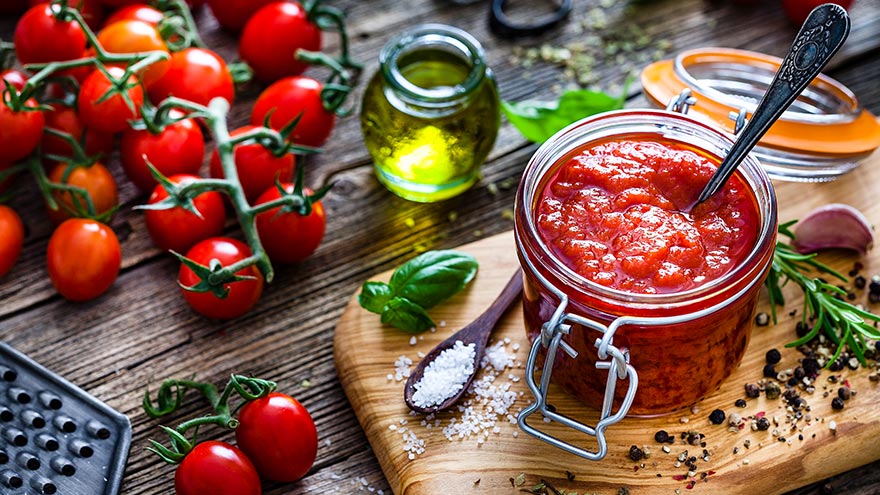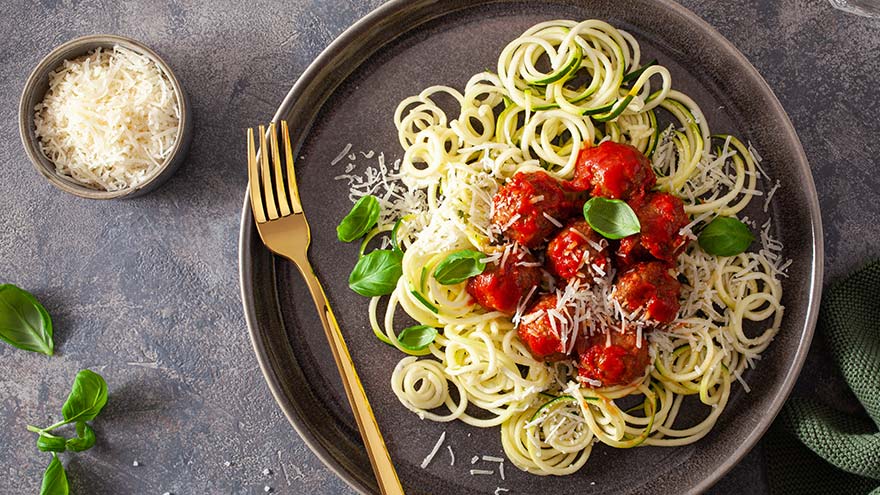Search
-
Prevent Osteoporosis: Take Control of Your Bone Health Today
Some risk factors associated with osteoporosis are out of your control. But you’re in luck, because some can be lessened by following simple tips. Below, Orthopedic Nursing Manager Katie McCarthy discusses the signs, symptoms and preventive measures. By Katie McCarthy, BSN, RN, ONC, Orthopedic Nursing Manager, Renown Health Osteoporosis is often called the silent disease, because it develops gradually for years with no clear signs or symptoms. And while some bone loss is expected as we age, osteoporosis is not a normal part of aging. So it’s important to start thinking about your bone health early. Bone is not just a lifeless scaffold for the body. It is living tissue that regenerates continually. Once we reach peak bone mass around age 25, we begin losing more bone than we produce, increasing the risk of developing osteoporosis — which literally means porous bone and points to a loss in bone density. In severe cases, normal everyday activities or movements, like hugging, can cause a fracture. After the first fracture you’re at higher risk for more, which can lead to a life of chronic pain and immobility. Bone fractures in the spine or hip are the most serious. Hip fractures can result in disability and even death — especially in older adults. Spinal fractures can even occur without falling. The vertebrae weaken to the point that they simply crumple, which can result in back pain, lost height and a hunched-forward posture. Osteoporosis: Uncontrollable Risk Factors Women are at greater risk of developing osteoporosis than men, and white and Asian women are at higher risk than black and Hispanic women. Other uncontrollable risk factors include: age; a family history of osteoporosis; certain genetic conditions; medications and medical treatments; eating disorders; a low body weight and small, thin frame; ethnicity; menopause: In fact, the lack of estrogen produced during menopause is largely responsible for a woman’s increased risk. Poor diet, tobacco use, excessive alcohol consumption, lack of exercise and an unhealthy weight also contribute to bone loss. Fortunately, those risk factors are in your control. Without symptoms, you can’t know if you’ve developed osteoporosis unless you get a bone density test or suffer a fracture. If you fall into a high-risk group, are over age 50 or have any concerns about your bone health, consult your doctor and find out if you need to be evaluated. Additionally, if either of your parents sustained hip fractures, you experienced early menopause or took corticosteroids for several months — a steroid often prescribed to relieve inflammation and arthritis — you’ll want to talk to your doctor about your bone health. If you test positive, your doctor will devise a treatment plan to match your needs, which will include lifestyle changes surrounding diet and exercise to build and strengthen weak bones. Medication to slow bone breakdown and build new bone may be prescribed, depending on the severity of your bone loss. If you’ve sustained a spinal fracture that is causing severe pain, deformity or is not responding to non-surgical treatment, your doctor may recommend surgery. Reduce Your Risk of Osteoporosis You can strengthen your bones now to prevent osteoporosis from starting. Here are some tips: Eat a diet rich in fruits and vegetables and low in caffeine, sodium and protein. Avoid soda, and talk to your doctor to make sure you’re getting enough calcium and vitamin D. Don’t smoke — it directly correlates with a decrease in bone mass. Smokers also take longer to heal from a fracture. Limit alcohol to two to three beverages per day. It interferes with the production of vitamins needed to absorb calcium and the hormones that help protect bones. Exercise three to four times each week — it’s key to healthy bones. Weight-bearing exercises like jogging, hiking and especially weight lifting build bone mass and density. There are aspects of the aging process we can’t control, but we can do something about bone loss and osteoporosis. Find out your risk, and show your bones a little TLC — you’re going to need them. This story was also published in the Reno Gazette-Journal’s Health Source on April 24, 2016.
Read More About Prevent Osteoporosis: Take Control of Your Bone Health Today
-
Get Spicy! Try This Easy Heart-Healthy Vegan Paella
Enjoy the heartiness of traditional paella without any added salt or meat. This recipe is also low in fat, making it a good heart-healthy choice for lowering cholesterol and blood pressure.
Read More About Get Spicy! Try This Easy Heart-Healthy Vegan Paella
-
Make Your Own Trail Mix: 4 Quick and Easy Recipes
Craving a snack with crunch, sweet flavor and a powerful nutritious punch? These healthy, homemade variants of this make-it-and-take-it super snack are sure to satisfy your sweet tooth and your healthy lifestyle. Who says healthy snacks and bland taste go together? We say you can have it all — nutritious and delicious snack foods that taste great and satisfy — and trail mix fits the bill. Your homemade batch can be as healthy as you like. The nuts provide fiber, protein and a whole lot of crunchy goodness; dried fruit and touches of chocolate infuse the mix with just the right amount of sweetness. We’ve compiled some simple-to-make and hard-to-resist recipes so you can easily pick up a few items from the grocery store’s bulk bins, or your kitchen cupboard, and put together a snack for your kiddos lunches or the office. Better yet, grab your mix and head out for a stroll or hike, or take along on your next road trip or adventure in Nevada’s rugged, desert locales.
Read More About Make Your Own Trail Mix: 4 Quick and Easy Recipes
-
5 Tips to Protect Your Knees from Pain and Injury
Knee pain and injury can restrict movement and make it difficult to be active, but studies show that the right type of exercise can help prevent these issues. It’s no wonder our knees are highly prone to injury. They house a complex network of muscles, ligaments and joints, and are crucial to our agility and daily movements. If you are experiencing knee pain, it’s important to not ignore this message from your body. While it’s fairly common to have occasional aches, if the pain limits your ability to perform normal daily activities like climbing stairs or walking with ease, have a medical professional check it out. “The take-home message here is to listen to your body,” says Amanda Henriques, PT, DPT at Renown Physical Therapy. “We are all built differently and respond to exercise in different and unique ways. Running may feel great for one person, but always lead to injury for another.” At any age, it's important to protect and strengthen your knees to help prevent pain and injury. Here are five tips from our experts: 1. Strengthen your muscles Choose exercises that focuses on the muscles around your kneecaps, hips and pelvis and places extra emphasis on your core. These muscles will absorb some of the stress places on your knees, helping them stay balanced and stable. 2. Maintain a healthy weight Each pound of body weight produces five pounds of force on the knee. If you need to shed weight, start with low-impact activities to avoid increased stress to your joints. 3. Pick the right exercise Opt for exercise that put less stress on your knees, such as cycling, walking or swimming. Choose flat surfaces when walking for exercise and avoid activities that put extra stress on your knees, such as deep knee bends or downhill running. 4. Warm up before working out Don’t overdo the workouts in length or intensity, and stretch after exercise to help prevent injury. 5. Avoid high heels Wear shoes with good arch support specific to your choice of exercise that provide a stable base for your feet and legs. Replace running shoes every 300 to 500 miles. Other athletic shoes should be replaced after 500 miles of wear. These tips can help keep your knees strong and prevent injury. But if you experience an accident or trauma, seek medical attention and follow up with any rehabilitation recommendations you receive. Depending on the injury, your doctor may recommend physical therapy, where you will be guided through individualized exercises to strengthen and heal. “If you listen to your body and take the appropriate preventative measures, you can find the right type of exercise to keep you happy, healthy and fit for life,”
Read More About 5 Tips to Protect Your Knees from Pain and Injury
-
3D vs Whole Breast Ultrasound Which is Right for You
Breast cancer is the leading cause of cancer deaths in women in the U.S. That’s why early detection is so important. Dr. George Krakora, a radiologist with Renown Institute for Cancer, explains what to watch for and how new technology can lead to early detection. Most women know the importance of breast health and staying current with annual breast exams, but may not know that both screening guidelines and technology is evolving. So we asked George Krakora, MD, a radiologist for the Renown Institute for Cancer, what every woman should know about breast cancer detection and which screening method is right for them. First off, when should women start getting breast exams? Generally, women should start getting breast exams using mammography or ultrasound after they turn 40 years old. But we also want women ages 18 to 39 to talk to their primary care provider and ask for what’s called a formal risk assessment to see if screening is needed sooner. And you want to make sure your care provider is giving you a breast exam starting at age 25. It’s also a good idea to be familiar with how your breasts look and feel so you can report any changes to your care provider. What are the risk factors for breast cancer? Are there any preventive steps women can take? There a few risk factors you can’t control, like your age, family history of breast or other cancers, and if you have dense breast tissue. Your risk for breast cancer increases as you get older, and most breast cancers are diagnosed after age 50. Knowing your family history is important because a history of cancer and shared lifestyle can raise your risk. Your breast density can also increase your risk: Women with high breast density are four-to-five times more likely to get breast cancer than women with low breast density. But the good news is there are quite a few things you can do to prevent breast cancer, like not smoking, watching your alcohol intake, and maintaining a healthy weight with good diet and exercise. There are a lot of newer screenings out today. What is the difference between 2-D and 3-D mammography? In a 2-D mammogram, the tech takes X-rays of the breast. These pictures can show the radiologist if there are any lumps or tumors you might not be able to feel. In 3-D mammography, the process is largely the same but more X-rays are taken and it takes a few seconds longer for each image. This kind of exam detects 41 percent more cancers and reduces the number of false-positive results given to patients. This improvement in technology is great for both patients and their care providers. 3-D mammography provides better images of the breast, which allow doctors to more clearly diagnose and avoid false positives, especially in women with dense breast tissue. And what about a whole breast ultrasound. What is that? A whole breast ultrasound uses sound waves to detect cancerous tumors in the breast without using any radiation — it’s an ultrasound just like pregnant women get to check up on their baby. And the exam only takes about 20 minutes. We recommend these exams for patients whose mammograms have shown that they have dense breast tissue. Dense breast tissue can make it harder for doctors to see any abnormalities, lumps or tumors in a mammogram, so this technology ensures better early detection.
Read More About 3D vs Whole Breast Ultrasound Which is Right for You
-
Slow Cooker Paleo Chili
Nothing says comfort like a bowl of chili. This rich, flavorful dish is Paleo-diet friendly and ready to eat when you are.
-
Paleo Garlic Mashed No-Tatoes
This scrumptious mashed potato substitute is super easy, tasty and gluten-free.
-
DIY Heart-Healthy Marinara Sauce
The convenience of marinara sauce in a jar is pretty hard to beat. But with some extra time in the kitchen, the nutritional value of traditional sauce — already packed with good stuff — goes off the charts.
-
Use This, Not That: 8 Healthy Cooking Swaps
If you’re looking for an easy way to add a nutritious kick to your favorite brownie, pizza or cream sauce recipe, check out these healthy ingredient substitutions. There’s no doubt about it: People love decadent, creamy and starchy dishes. If you’re prone to avoiding your favorite guilty pleasure because it’s not a healthy choice, there are a few easy, healthy and delicious substitutions you can add to your cooking or baking routine to satisfy your cravings. Here are eight of our favorite healthy substitutions you might have in your kitchen right now: Baking Swaps Avocados for Butter While this might not sound like an appetizing addition, avocado's creamy texture is similar to butter and can easily be added to brownie and cookie recipes. Avocados are high in healthy fats that help to lower cholesterol and are lower in saturated fats. They also can add vitamin E, fiber and potassium to your baked goods. Swap Amount: Substitute 1 cup blended avocado per 1 cup butter. Bananas for Oil Bananas are a tasty option to replace the use of oil in baking recipes. While oil is higher in fat and calories, bananas can provide potassium, fiber, vitamin B6 and all-natural sweetness to your recipe. Do take into account that bananas are higher in sugar and carbohydrates. Swap Amount: Substitute 1 cup of mashed bananas per 1 cup of oil. Beans for Flour You might not typically think of beans as a substitution, but they can add a lot of nutritional benefits to your treats. High in protein, fiber, folate, magnesium and phosphorous, beans are a great substitution for traditional flour in recipes and create a moist and dense texture to your baked goods. Swap Amount: Substitute 1 cup of blended beans (about a 15 ounce can) per 1 cup of traditional flour. Or, Wheat Flour for White Flour If the bean substitution doesn’t appeal to you, try substituting at least half or all of your unbleached white flour for whole wheat flour. Keep in mind for every cup of whole wheat flour you use, add another 1/4 cup of water to your recipe. This will add more fiber, protein, B vitamins, and several minerals for your baking recipe and scrumptious treats. Chia Seeds or Flax Seeds for Eggs This is a great substitution if you're allergic to eggs or have a vegan diet, but still want to enjoy desserts and breads. Chia and flax seeds are high in omega-3 fatty acids and calcium along with fiber, vitamins and minerals to help promote healthy digestion. This substitution will not provide as much protein as an egg would; however, there is less cholesterol and saturated fat. Swap Amount: Combine 1 tablespoon of ground chia or flax seeds mixed with 3 tablespoons of water, stir and let sit for 15 minutes. Equals one whole egg equivalent. Cooking Swaps Nonfat Greek Yogurt for Mayonnaise Making this switch is an easy replacement for sauces and dressings. Nonfat Greek yogurt is significantly lower in fat and calories and higher in protein. With the added protein, you will feel fuller longer throughout the day. Swap Amount: Substitute equal parts nonfat Greek yogurt for mayonnaise. Try mixing it into a cheese sauce or add lemon juice and spices for a creamy salad dressing. Lemon Juice or Vinegar for Salt If you are worried that your food will be bland, try this swap to lower added salt and still enjoy flavor while creating a fresh, tangy twist to the meal. There are a lot of varieties -- red wine, apple cider and balsamic -- each enhancing your dish with a different flavor. Swap Amount: Experiment by using half the amount of vinegar or lemon juice per the amount of salt your recipe calls for. Cauliflower for Pizza Crust Try a new twist on pizza by switching out its carbohydrate dense crust with fresh cauliflower. This substitution is lower in calories, fat, and simple carbohydrates while increasing your vitamin C and vegetable intake for the day. Swap Amount: Add one egg per every head of cauliflower and season with spices to taste, for a medium sized pizza. Or, Mashed Potatoes Preparing a homemade cauliflower pizza crust can be time consuming, so an easier exchange might be to substitute mashed cauliflower for mashed potatoes, which are higher in starches, calories and carbohydrates. Swap Amount: Boil and puree a medium size head of cauliflower. Add a splash of low fat milk and season to taste. Zucchini or Squash for Spaghetti Another great way to add vegetables to your meals is to exchange ribbons of zucchini or spaghetti squash for spaghetti noodles. This substitution helps to reduce calories and carbohydrates and zucchini is rich in vitamin A. Experiment with different sauces and spices to create a variety of dishes. Swap Amount: For zucchini ribbons, try using a mandolin or a peeler. When preparing spaghetti squash, cut it in half and lay face down in an oven safe pan. Add 1/2 inch of water to the bottom of the pan for more tender spaghetti strings (optional). Cook for 30 to 45 minutes until tender. Lie the squash face up, letting it slightly cool, and then use a fork to gently pull the squash from the peel, separating into strands. Remember: Some of these substitutions will affect the taste and texture of your recipes, so it is essential to play with the ratios to find the perfect fit for you. Consume a variety of foods, eat treats in moderation, and incorporate frequent physical activity to keep a well balanced, healthy lifestyle.
-
Meatless Monday: Black Bean Tostadas
Research shows that plant-based diets can help manage — and in some cases aid — in the prevention of many chronic conditions such as diabetes, heart disease and even cancer. If you’re looking to adopt a healthier lifestyle, try incorporating more plant-based and meatless recipes into your diet — even if it’s just once a week. If you want to cut back on meat but not flavor, we’ve got you covered with this black bean tostada recipe. The list of ingredients includes a number of veggies and spices that are not only good for you, but will make your taste buds sing. The best part? This delicious, Mexican-style dish is so easy that even the most novice cook can have dinner served in just 15 minutes. Enjoy!
-
Super Easy Seared Salmon & Spring Salad
Watch Renown Chef Chris Wyatt blend zest and spice in this seared salmon and grilled veggie dish with a few secret ingredients. Are you looking for a new twist on an old stand-by dinner favorite while getting a heart-healthy dose of omega-3s? Look no further: Salmon recipes don’t get any easier than this. With this mouth watering recipe totaling in at just less than 350 calories, done in nearly 30 minutes, you’re going to want to make it your next meal. Added perk: Eating fish, such as salmon, twice a week has been found to lower the risk of heart attack and stroke over fish oil supplements.
-
A True Joint Effort: Exercises to Prevent Knee Pain
Experiencing knee pain during exercise or while undertaking daily activities? The knee is the largest joint in our body, so it goes without saying a lot hinges on its functionality. Here are a few exercises to help. Is exercise a real pain in the knee for you? Does getting up in the morning require a few minutes for your knees to adjust to walking around? As it turns out, knee pain is common, and it can result from injury, overuse or the breakdown of cartilage over time. Often, this pain is a result of faulty mechanics in your body, according to Jessica Ryder, a physical therapist with Renown Physical Therapy and Rehab. “We see weakness at the hips causing a lot of stresses at the knee,” she says. Exercises that Alleviate Knee Pain Try these three exercise to strengthen your glute muscles and maintain proper alignment in your knees. Hip Lift Lie flat on your back with your knees bent and feet flat against the floor. Lift your hips into the air until your body is in a neutral position, then lower your hips back down. Repeat this motion several times until you feel a gentle burn in your glute muscles. Step Down Stand with one foot on a stair or step. Slowly bend your knee and drop the other foot toward the floor. Slowly extend back up to your starting position. While doing this exercise, it’s important to move slowly, maintain control and ensure that your knee is in line with your toes. Do as many reps as needed until you feel a small fatigue in your muscles. Repeat this exercise on the opposite leg. Side Step with Exercise Band Place an exercise band around your ankles. Stand in a slight squat and then take several steps to the side until you feel a small fatigue on the outside of your hips. While doing this exercise, keep your upper body still and focus the exercise to your hips. The band will try to move your knees toward each other Repeat in both directions. Hometown Health and Renown Health are proud to be the official insurance plan and healthcare partners of the Nevada Wolf Pack. Renown Physical Therapy and Rehab | 775-982-5001 Through outpatient physical, occupational and also speech therapy, Renown Physical Therapy and Rehab gives patients hands-on, individualized treatment. Our therapists use evidence-based methods to help patients return to an active, productive lifestyle. Learn More About PT
Read More About A True Joint Effort: Exercises to Prevent Knee Pain











